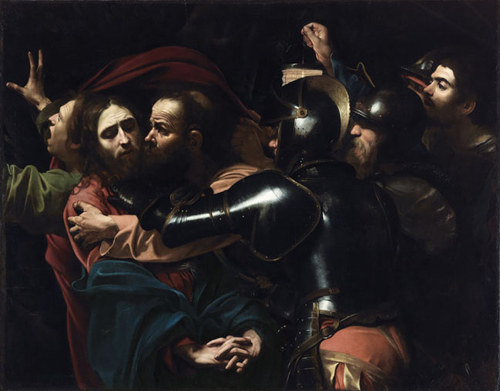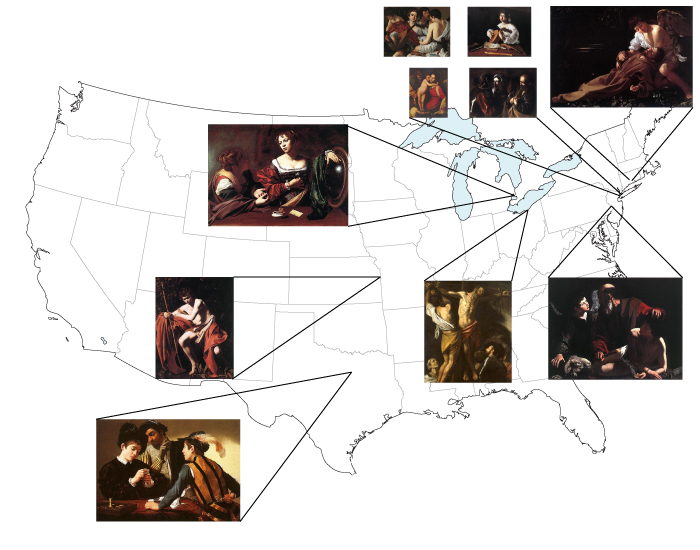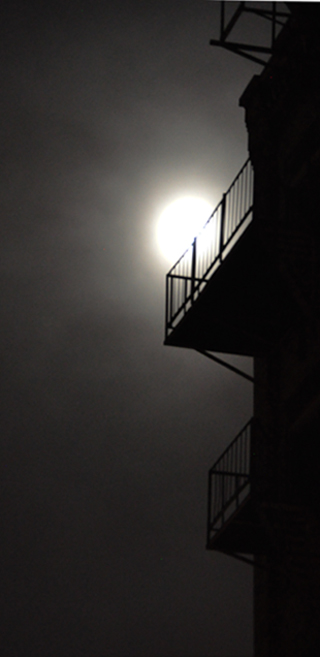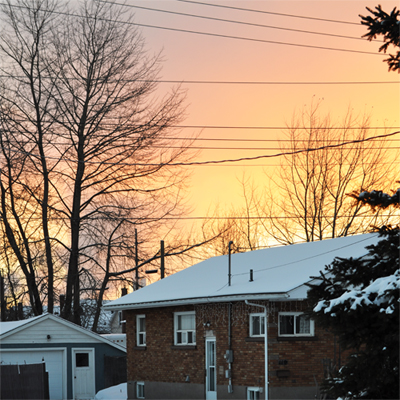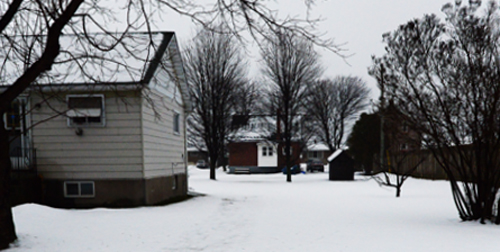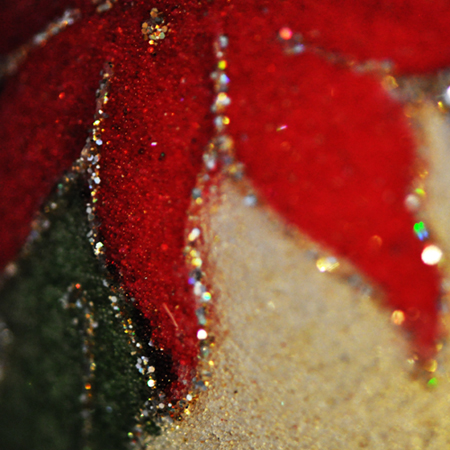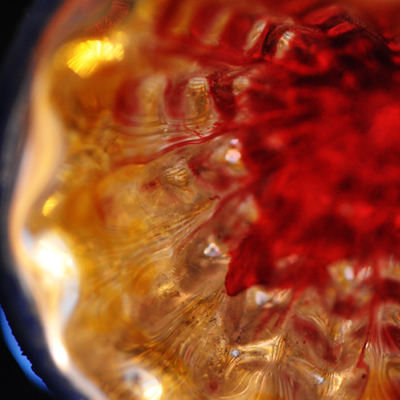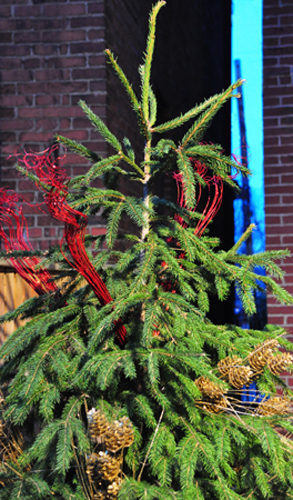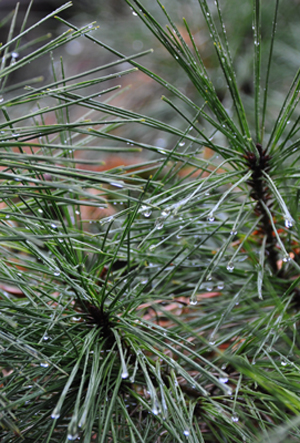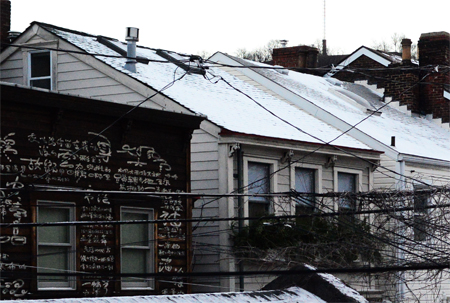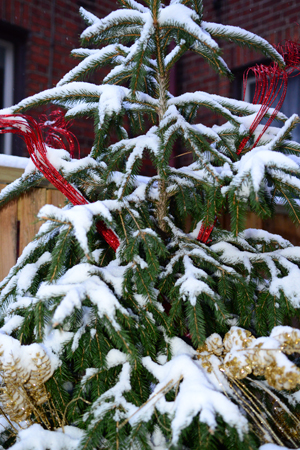on the twelfth day of christmas, my true lovelast entry – christmas 2013
prologue-1 – italy 2014
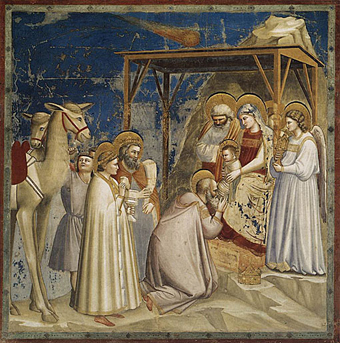 The impetus for this entry is the magical word twelfth. I can’t spell it, because I have no understanding of how you combine a t, a w, an e, an l, an f, another t and an h into a word. What were them Middle Englishers thinking? And yet I love the contortions the tongue has to perform in order to make the sound. It comes out like an incantation.
The impetus for this entry is the magical word twelfth. I can’t spell it, because I have no understanding of how you combine a t, a w, an e, an l, an f, another t and an h into a word. What were them Middle Englishers thinking? And yet I love the contortions the tongue has to perform in order to make the sound. It comes out like an incantation.
Not to be outdone by them 14th century peoples, I’ve assembled my own contradictions from highfalutin Shakespeare (the post title), and Giotto (the image), to the low-brow Twelve Days of Christmas (the entry title). While using the Catholic feast of the Epiphany to tie them all together.
The pic is Giotto’s Adoration of the Magi. (Giotto’s frescoes remind me of American primitive paintings.) With camels and gifts the three kings have followed the comet – the brown ball at the top of the image – to the stable at Bethlehem. In the fresco, this stable seem to be the end of the road. The oldest king has taken off his crown and kneels before the child. All present watch except for the camel driver who prefers to attend to his animals. (He’s my favorite character in this Medieval pageant.)
The 2013 Christmas season is done. And good riddance. I am so glad to be nowhere near northern Michigan; to not hear anymore carols, holiday greetings, birthday wishes or questions about retirement.
Yesterday, I went over to Rick-and-Sarah’s and we booked our flights to Italy for August.
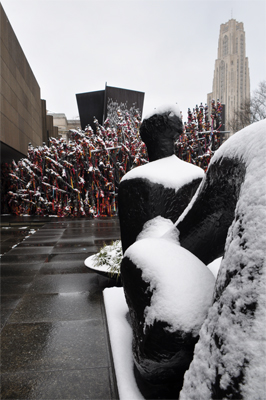
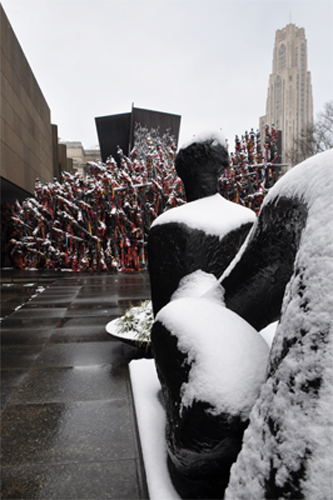 (moore) Reclining Figure, (barlow) Tip, (serra) Carnegie, (left) Scaife Wing, (right) Cathedral of Learning – University of Pittsburgh.
(moore) Reclining Figure, (barlow) Tip, (serra) Carnegie, (left) Scaife Wing, (right) Cathedral of Learning – University of Pittsburgh.

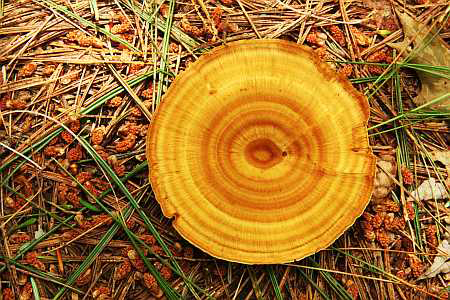 Lately, I’ve been thinking about the group that I grew up in when living in Northern Ontario. For me, the
Lately, I’ve been thinking about the group that I grew up in when living in Northern Ontario. For me, the 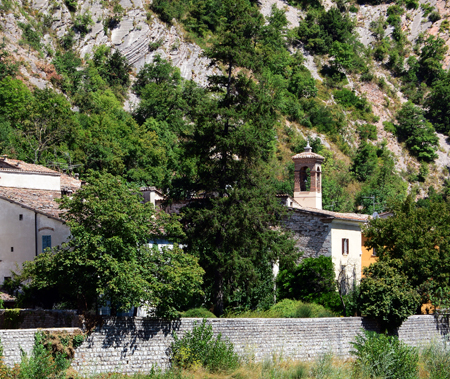
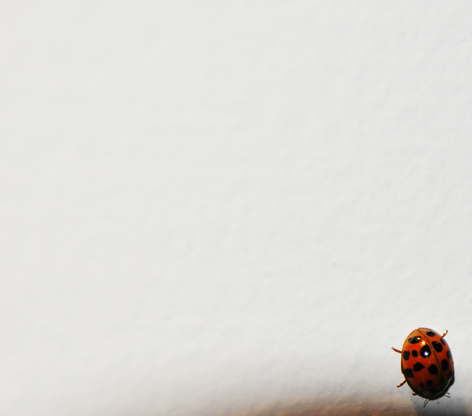
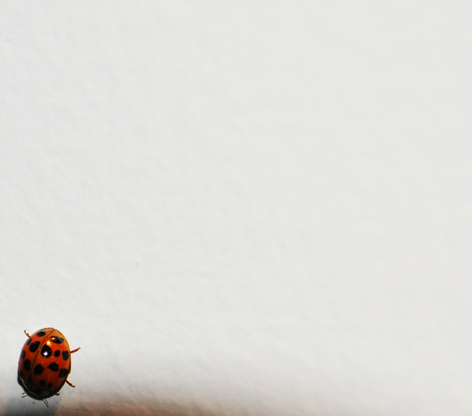 On my way up to the Sault, I decided to take a different route and stop in at St. Gregory’s Abbey south of Kalamazoo. I knew of the place from my visits to the Episcopal community of monks in Cambridge. (One of the Christian Brothers I’ve been working with, on charter school issues, suggested we meet there to follow-up on our conversation.) The group in Michigan lives in a rural setting in the middle of the farming belt that runs through Ohio and Indiana.
On my way up to the Sault, I decided to take a different route and stop in at St. Gregory’s Abbey south of Kalamazoo. I knew of the place from my visits to the Episcopal community of monks in Cambridge. (One of the Christian Brothers I’ve been working with, on charter school issues, suggested we meet there to follow-up on our conversation.) The group in Michigan lives in a rural setting in the middle of the farming belt that runs through Ohio and Indiana.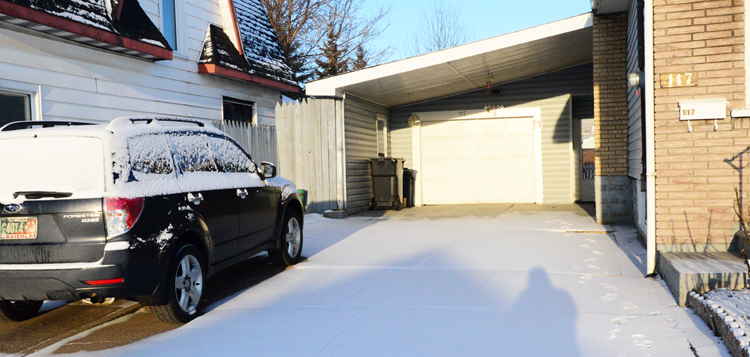
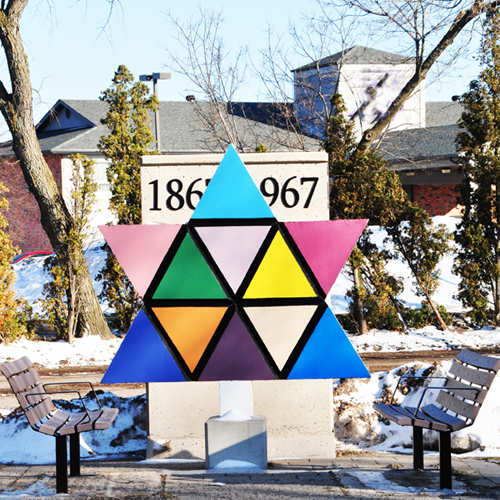
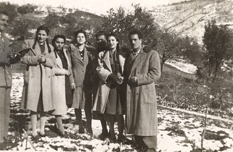 My parents never talked about the war. I was raised to believe that we left Calabria, because of economic reasons; that my dad left Calabria to find work and cash in on the benefits that came from a steady job. And yet my parents grew up in the 40’s. They were teenagers when Hitler marched through Europe; when Mussolini harangued the crowds from the stone balustrade, which overlooks Piazza Venezia. And yet not a word was uttered. Instead I saw pictures of Aprigliano, of their friends in long, elegant coats. (Mafalda is third from the left.) I remember wanting to look like them. And BTW, I have two long elegant coats of my own.
My parents never talked about the war. I was raised to believe that we left Calabria, because of economic reasons; that my dad left Calabria to find work and cash in on the benefits that came from a steady job. And yet my parents grew up in the 40’s. They were teenagers when Hitler marched through Europe; when Mussolini harangued the crowds from the stone balustrade, which overlooks Piazza Venezia. And yet not a word was uttered. Instead I saw pictures of Aprigliano, of their friends in long, elegant coats. (Mafalda is third from the left.) I remember wanting to look like them. And BTW, I have two long elegant coats of my own.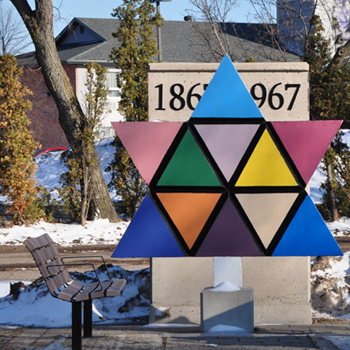 In 1968 at 17, I left Sault Ste Marie believing that I was joining an organization that would set me on a path that was consistent with the values that I had learned in my parents’ home. I was joining a group of Brothers who dedicated themselves to teaching. I was maintaining both a religious tradition and an educational imperative. However, when I got to the Novitiate in Rhode Island, I discovered a group a men on the cusp of reform. Religious traditions and educational imperatives were old fashion; I was told that I belonged to a new generation. I was told to not trust anyone over 30. And so began the shift. I had permission to walk away from what I had learned while living in my parents’ house; while living within the immigrant community in Sault Ste Marie. Like my parents who forget to tell us about the war; I could forget my Catholic upbringing; forget my immigrant roots. I could grow my hair long; wear bell-bottoms; toke a joint. The moon was in the seventh house and the sun would shine onto the post-war world; there would be no more falsehoods or derision.
In 1968 at 17, I left Sault Ste Marie believing that I was joining an organization that would set me on a path that was consistent with the values that I had learned in my parents’ home. I was joining a group of Brothers who dedicated themselves to teaching. I was maintaining both a religious tradition and an educational imperative. However, when I got to the Novitiate in Rhode Island, I discovered a group a men on the cusp of reform. Religious traditions and educational imperatives were old fashion; I was told that I belonged to a new generation. I was told to not trust anyone over 30. And so began the shift. I had permission to walk away from what I had learned while living in my parents’ house; while living within the immigrant community in Sault Ste Marie. Like my parents who forget to tell us about the war; I could forget my Catholic upbringing; forget my immigrant roots. I could grow my hair long; wear bell-bottoms; toke a joint. The moon was in the seventh house and the sun would shine onto the post-war world; there would be no more falsehoods or derision.
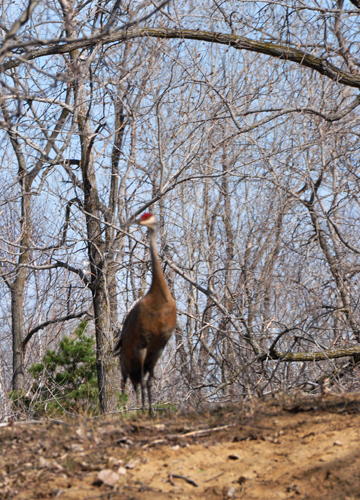
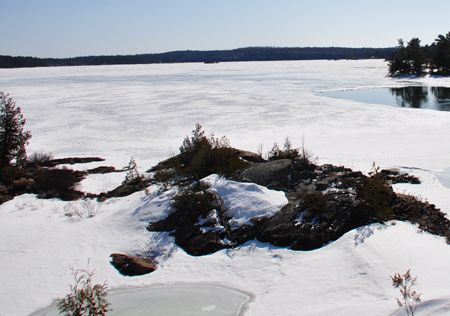

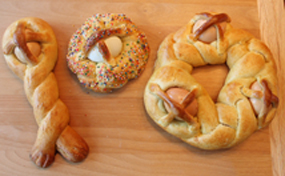 There are two foods that I associate with Easter – the Mylar-wrapped chocolate eggs and the home-made breads with an egg imbedded in the braids. The chocolate eggs were tall, shinny and crinkly; they also had a small toy inside. Ciccio would buy each of his children one of these and give them to us on Easter Sunday. I remember the breads as wonders – because I was too young to understand that the egg cooked while the bread was in the oven, I kept expecting to tap the egg and have it still be raw. My mother still makes the braided Easter bread both the long and the round. However, in post-war Calabria there were no Jimmies to sprinkle on top of the Easter breads. And Mafalda would never blemish her Easter bread with something as American as Jimmies.
There are two foods that I associate with Easter – the Mylar-wrapped chocolate eggs and the home-made breads with an egg imbedded in the braids. The chocolate eggs were tall, shinny and crinkly; they also had a small toy inside. Ciccio would buy each of his children one of these and give them to us on Easter Sunday. I remember the breads as wonders – because I was too young to understand that the egg cooked while the bread was in the oven, I kept expecting to tap the egg and have it still be raw. My mother still makes the braided Easter bread both the long and the round. However, in post-war Calabria there were no Jimmies to sprinkle on top of the Easter breads. And Mafalda would never blemish her Easter bread with something as American as Jimmies. 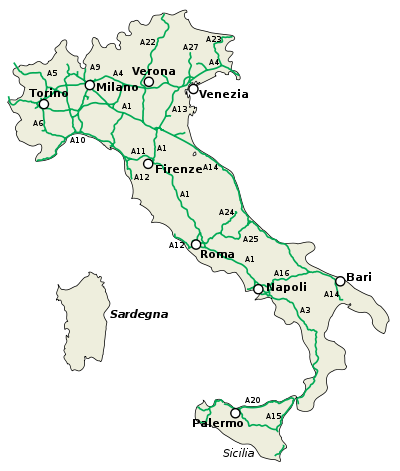
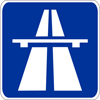 I’m hoping we can spend a couple of hours in Reggio; the lungomare is phenomenal. The second week, we’re in Belmonte Calabro for the first half and Naples for the second. We’re driving the A3 between Reggio and Calabro. We will visit with my relatives in Aprigliano and Pietrafitta and go to Pompeii when in Naples.
I’m hoping we can spend a couple of hours in Reggio; the lungomare is phenomenal. The second week, we’re in Belmonte Calabro for the first half and Naples for the second. We’re driving the A3 between Reggio and Calabro. We will visit with my relatives in Aprigliano and Pietrafitta and go to Pompeii when in Naples.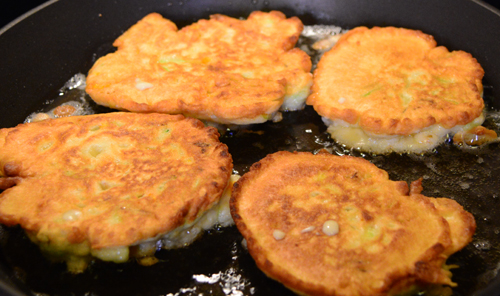
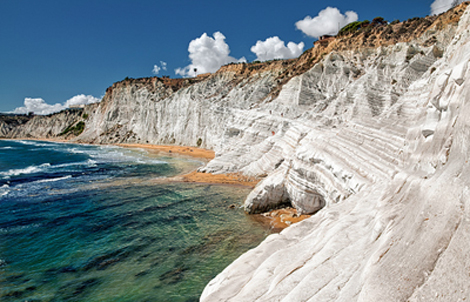
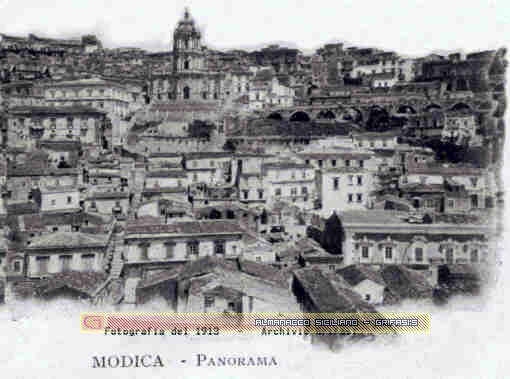
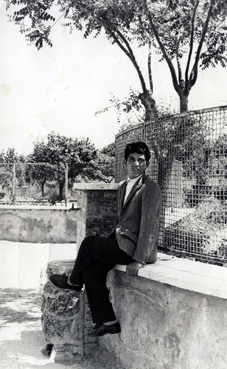
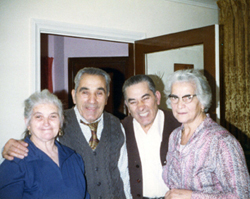 I believe that on the Zinga side of the family there is a genetic abnormality that has resulted in number of children with disabilities. My grandfather Nunziatu and my uncle Luigi, his older brother, both had mentally retarded children. My uncle Luigi’s son made it through immigration. He grew up in Canada; was never able to live on his own, but he was an active member of the family attending all Zinga family events. I don’t know enough about my uncle Mario to know how severe his disability is. However, it’s also true that other Zinga parents had very bright children; both ends of the spectrum are represented in the extended family.
I believe that on the Zinga side of the family there is a genetic abnormality that has resulted in number of children with disabilities. My grandfather Nunziatu and my uncle Luigi, his older brother, both had mentally retarded children. My uncle Luigi’s son made it through immigration. He grew up in Canada; was never able to live on his own, but he was an active member of the family attending all Zinga family events. I don’t know enough about my uncle Mario to know how severe his disability is. However, it’s also true that other Zinga parents had very bright children; both ends of the spectrum are represented in the extended family. 
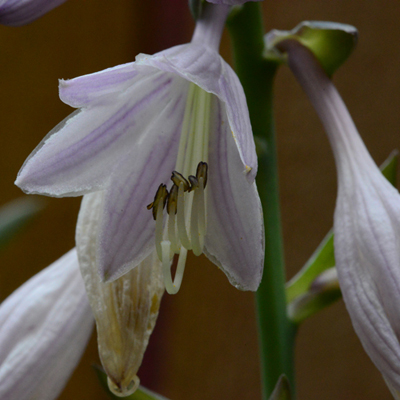 The image on the left is the result of shooting a Hosta flower at close range with a tripod. The soft brown background is the wooded fence. And all I did to the image is crop it into a square; no other Photoshop tweaks. I really like the images from this lens. The stamens are almost impossible to see with the naked eye and yet with the micro lens their black caps center the focus. (Most of the images in the slide-show, in the header, were shot with this same lens.)
The image on the left is the result of shooting a Hosta flower at close range with a tripod. The soft brown background is the wooded fence. And all I did to the image is crop it into a square; no other Photoshop tweaks. I really like the images from this lens. The stamens are almost impossible to see with the naked eye and yet with the micro lens their black caps center the focus. (Most of the images in the slide-show, in the header, were shot with this same lens.)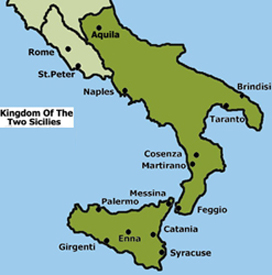 Federico was one of the most powerful Holy Roman Emperors of the Middle Ages. His political and cultural ambitions, based in Sicily, stretched through Italy to Germany and even to Jerusalem. His brilliant court which blended Norman, Arabic and Jewish elements was housed in Palermo. Also, in 1234, Federico founded the University of Naples, the first state university in western Europe.
Federico was one of the most powerful Holy Roman Emperors of the Middle Ages. His political and cultural ambitions, based in Sicily, stretched through Italy to Germany and even to Jerusalem. His brilliant court which blended Norman, Arabic and Jewish elements was housed in Palermo. Also, in 1234, Federico founded the University of Naples, the first state university in western Europe. 
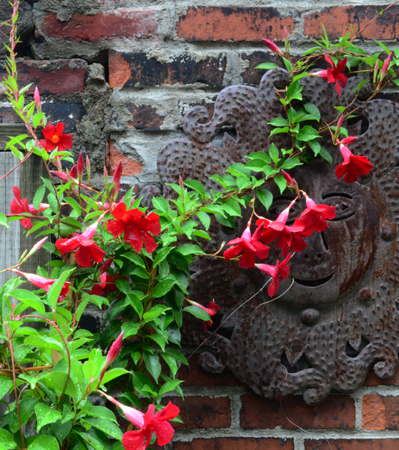
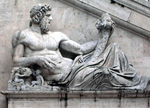 (In the image on the left, the face reminds me of the relief of the Tiber god on the Campidoglio steps – above image. According to legend, the god’s hair represents the river.)
(In the image on the left, the face reminds me of the relief of the Tiber god on the Campidoglio steps – above image. According to legend, the god’s hair represents the river.) 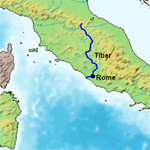 The river begins in the Apennines in Emilia-Romagna, flows south for 252 miles and empties into the Mediterranean south-west of Rome. In the 1930s, Mussolini placed an antique marble column at its source. The inscription reads
The river begins in the Apennines in Emilia-Romagna, flows south for 252 miles and empties into the Mediterranean south-west of Rome. In the 1930s, Mussolini placed an antique marble column at its source. The inscription reads 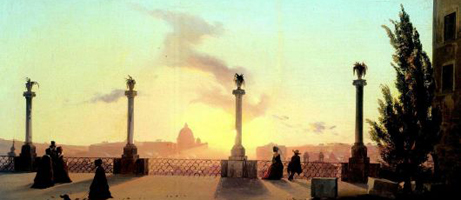
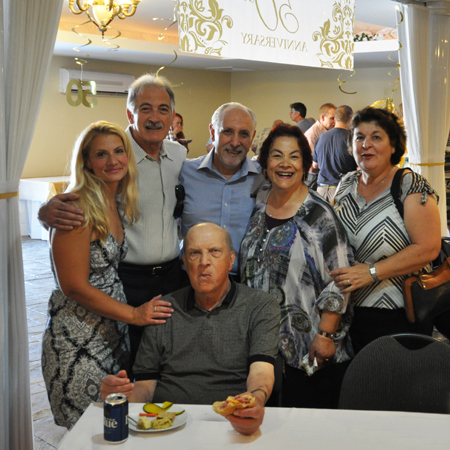
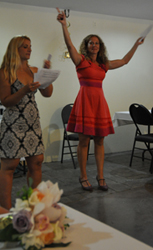
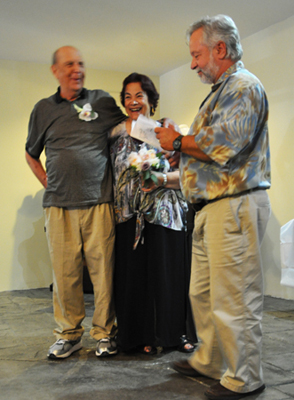 Renato knew most of the answers and our team won 3rd place. When Lisa handed out the prizes, we got a bottle of white wine. And as we all know the Calabrese don’t drink white wine, so Renato went over to another team that had also won and swapped the white for a red. (He is such a Zinga.) The only answer I contributed was which famous American general died in 1964.
Renato knew most of the answers and our team won 3rd place. When Lisa handed out the prizes, we got a bottle of white wine. And as we all know the Calabrese don’t drink white wine, so Renato went over to another team that had also won and swapped the white for a red. (He is such a Zinga.) The only answer I contributed was which famous American general died in 1964. 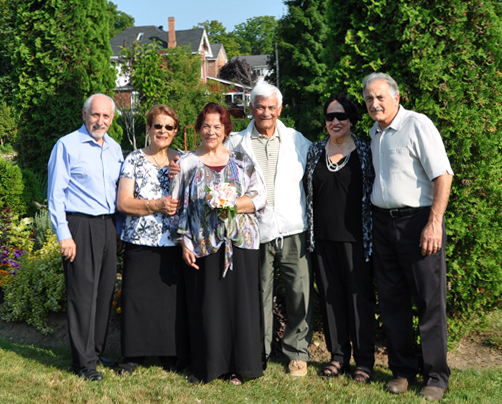

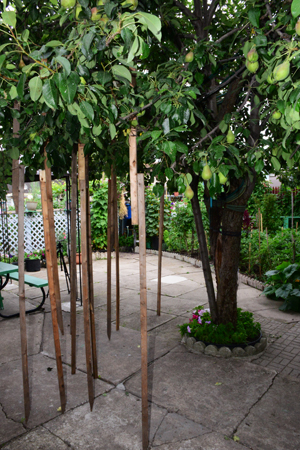
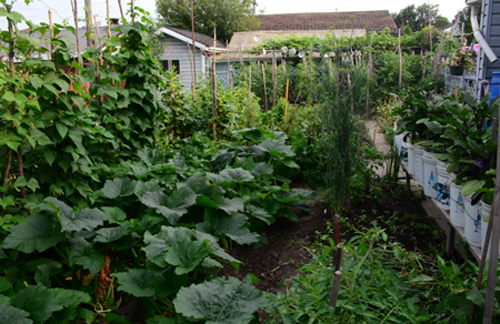
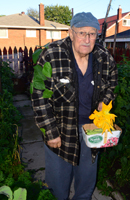 My father’s favorite plants, the ones he lavishes time and energy on, are the pole-beans. The image on the left is Ciccio first thing in the morning. He has picked zucchini flowers that my mother will make into fritters. He also has beans in the basket and the pole-bean leaves on his jacket. (The leaves are sticky and cling to his clothes as he walks through the patch snapping beans.) There are two things he grows well – pole-beans and the fruit trees. My mother cooks the green-beans, cuts garlic into the shells and loose beans and then drizzles them with olive oil. Seane and I eat the whole bowl. We do not share with any other family member. While visiting with my parents, I lived on cucumbers, green-bean salads, zucchini-flower fritters and
My father’s favorite plants, the ones he lavishes time and energy on, are the pole-beans. The image on the left is Ciccio first thing in the morning. He has picked zucchini flowers that my mother will make into fritters. He also has beans in the basket and the pole-bean leaves on his jacket. (The leaves are sticky and cling to his clothes as he walks through the patch snapping beans.) There are two things he grows well – pole-beans and the fruit trees. My mother cooks the green-beans, cuts garlic into the shells and loose beans and then drizzles them with olive oil. Seane and I eat the whole bowl. We do not share with any other family member. While visiting with my parents, I lived on cucumbers, green-bean salads, zucchini-flower fritters and 
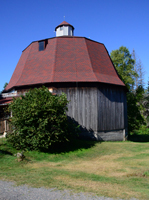 The barn is one of three 12-sided barns in Canada. The oldest of the three was built in 1881 in Mystic, Quebec by Alexander Wallbridge. The second 12-sided barn was built in 1919 by Thomas Cordukes who was born and grew up near Mystic. He left Quebec and settled in the Huron Shores area in 1881, prior to the original barn being built, but returned often to visit family and would have been privy to the progress of the Wallbridge barn. The third barn, built in 1928 by local farmer Alexander Campbell, is located near Maple Ridge. Campbell, a neighbor of Thomas Cordukes, assisted with the building of his barn 9 years earlier.
The barn is one of three 12-sided barns in Canada. The oldest of the three was built in 1881 in Mystic, Quebec by Alexander Wallbridge. The second 12-sided barn was built in 1919 by Thomas Cordukes who was born and grew up near Mystic. He left Quebec and settled in the Huron Shores area in 1881, prior to the original barn being built, but returned often to visit family and would have been privy to the progress of the Wallbridge barn. The third barn, built in 1928 by local farmer Alexander Campbell, is located near Maple Ridge. Campbell, a neighbor of Thomas Cordukes, assisted with the building of his barn 9 years earlier.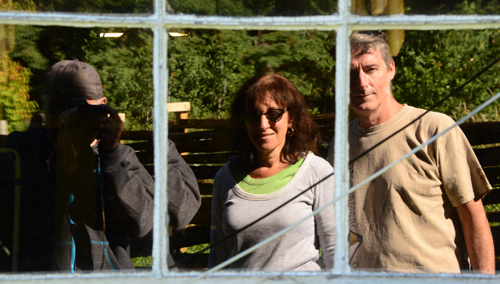
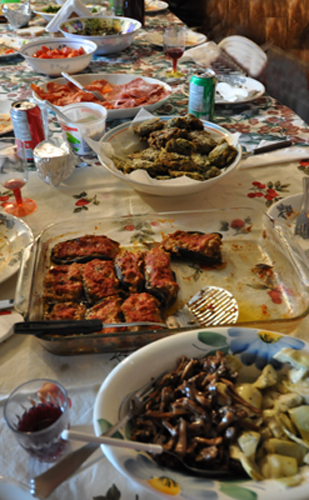
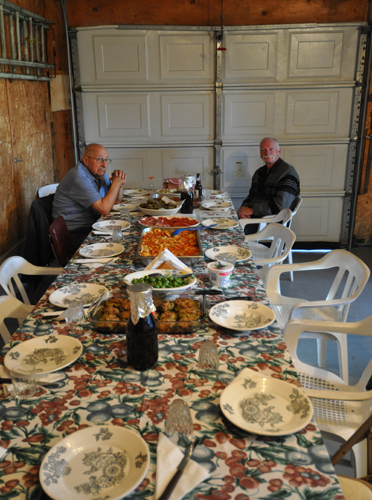 In Sault Ste Marie, it’s very common to have an outdoor meal in the garage. The weather is not summer enough to eat outside and the outside doesn’t have hot water, a sink, a refrigerator, or a stove to make the meal efficient. Also, it may be a picnic in a garage, but you don’t forgo plates, silverware and glasses – two sizes tall for water and short for wine. (In Calabria, they would have been under an olive tree or a quercia. Dam the conveniences, they had the sun, the shade, the landscape and the family.) Today, the weather was very chilly; we all wore long-sleeves and the garage door stayed closed.
In Sault Ste Marie, it’s very common to have an outdoor meal in the garage. The weather is not summer enough to eat outside and the outside doesn’t have hot water, a sink, a refrigerator, or a stove to make the meal efficient. Also, it may be a picnic in a garage, but you don’t forgo plates, silverware and glasses – two sizes tall for water and short for wine. (In Calabria, they would have been under an olive tree or a quercia. Dam the conveniences, they had the sun, the shade, the landscape and the family.) Today, the weather was very chilly; we all wore long-sleeves and the garage door stayed closed. 

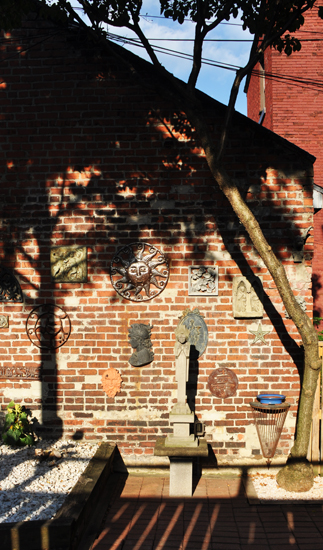

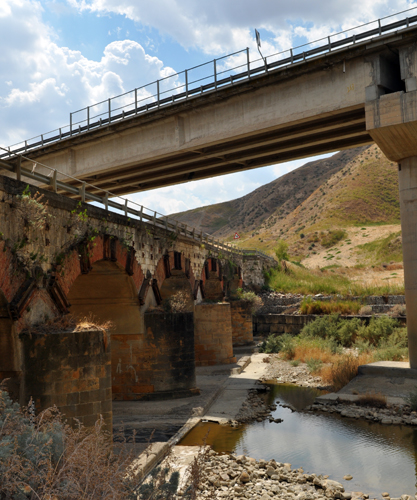
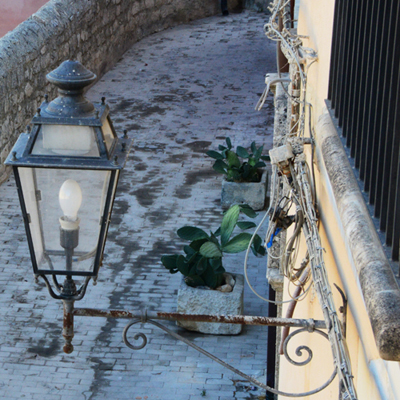



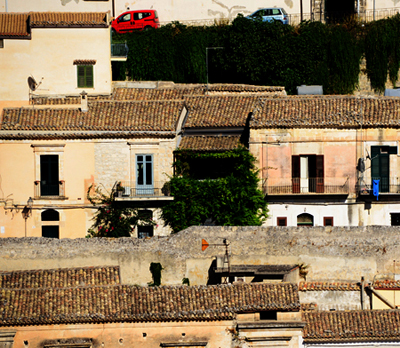
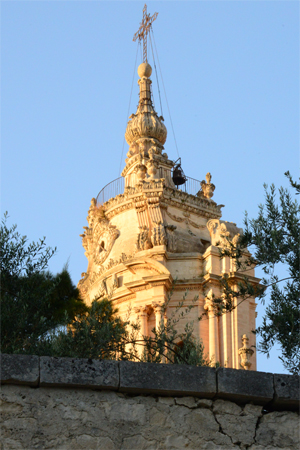

 Siracusa so much that we decided to go back again today. We drove and parked in
Siracusa so much that we decided to go back again today. We drove and parked in 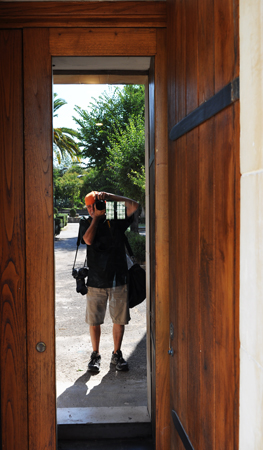
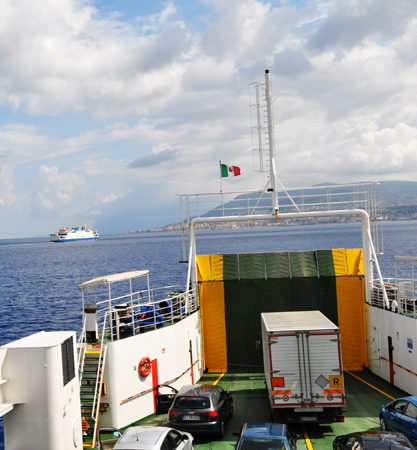
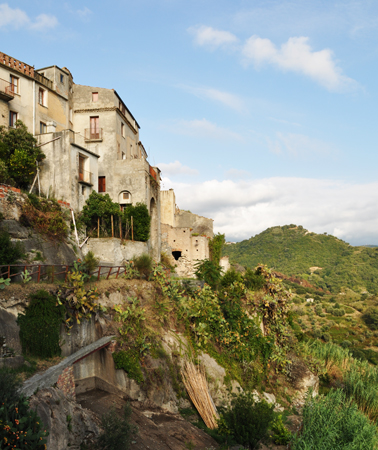

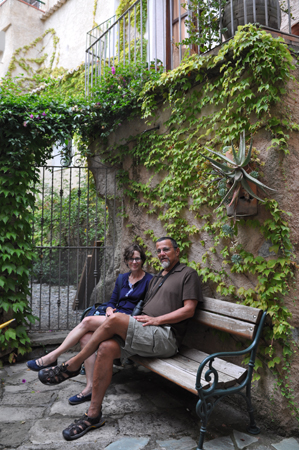
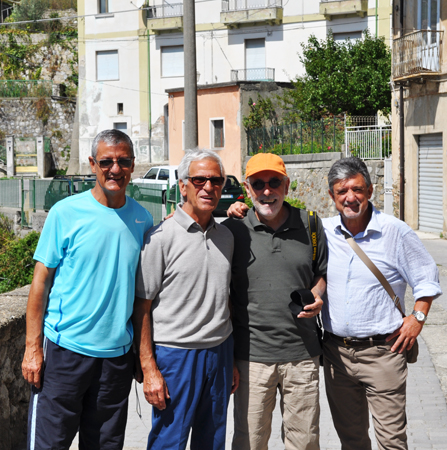
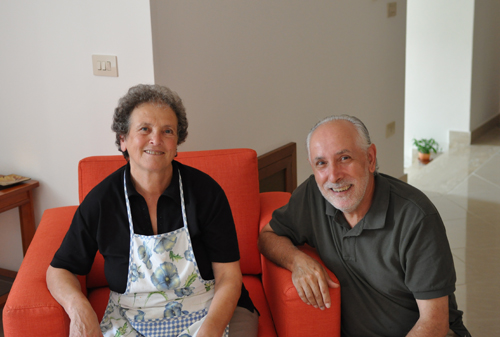
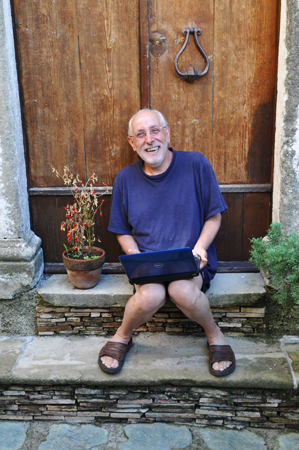
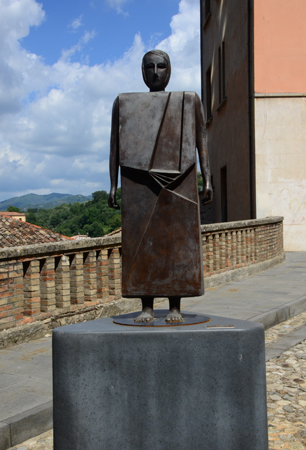
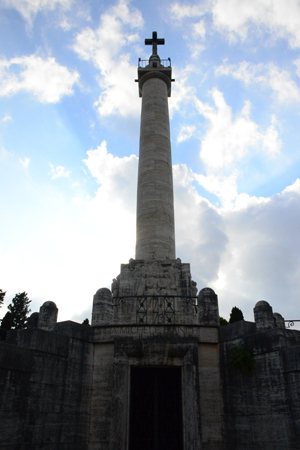
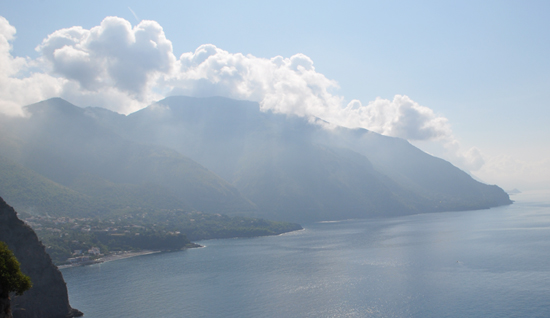
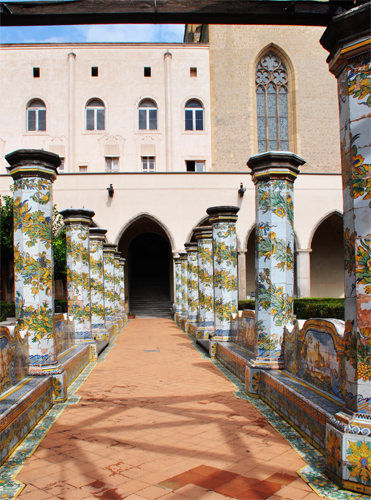
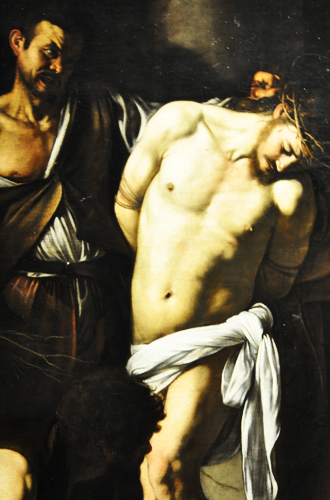
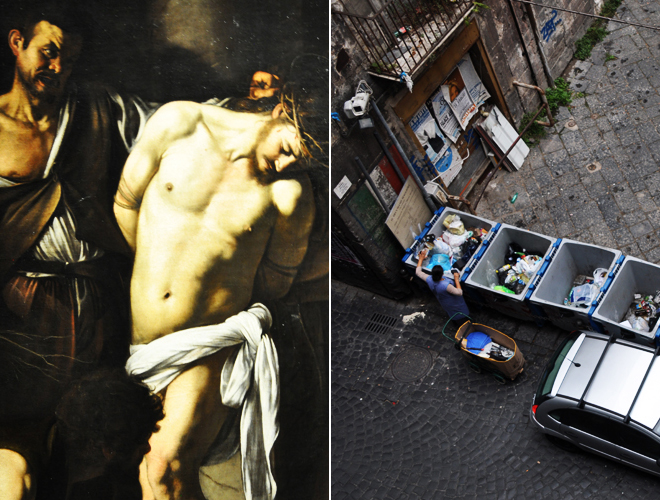
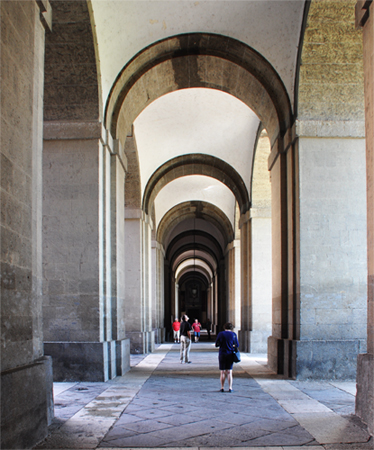
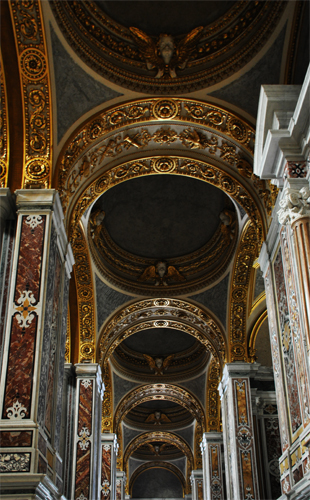

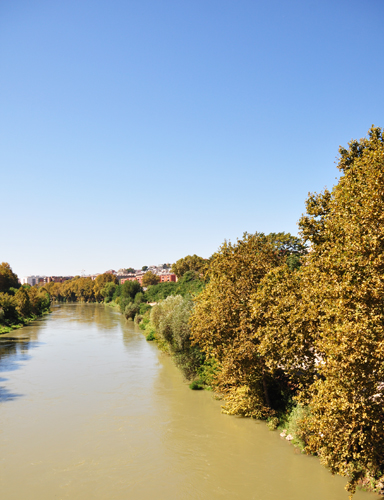
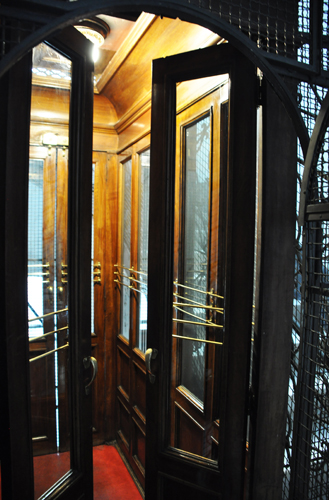 I thought I’d write about the great apartment we in. (The image on the left is one of two elevators in the building. An Otis turn-of-the-century treasure that runs perfectly well.) When I made the four reservations for the accommodations, the one I had the least information about was the apartment in Rome. The original reservation was for a wonderful three-floor apartment in the Jewish quarter, but the owner – Rodolfo – had to cancel, because they were going to repair the roof and drain-spouts in his apartment building. I asked him to recommend something and he sent me to his niece who managed an apartment in
I thought I’d write about the great apartment we in. (The image on the left is one of two elevators in the building. An Otis turn-of-the-century treasure that runs perfectly well.) When I made the four reservations for the accommodations, the one I had the least information about was the apartment in Rome. The original reservation was for a wonderful three-floor apartment in the Jewish quarter, but the owner – Rodolfo – had to cancel, because they were going to repair the roof and drain-spouts in his apartment building. I asked him to recommend something and he sent me to his niece who managed an apartment in 
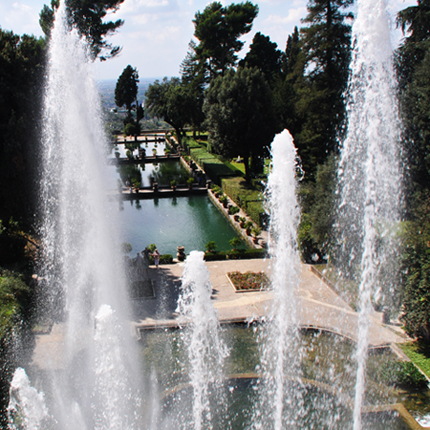

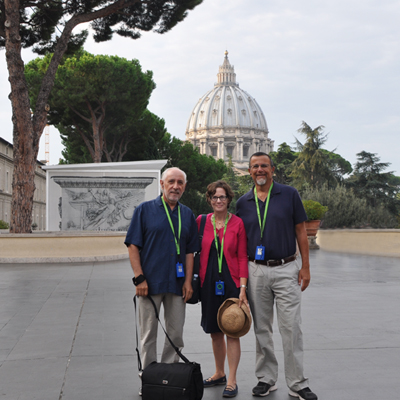
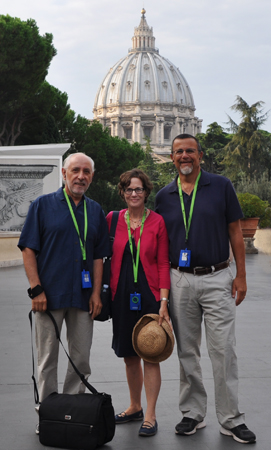 This morning we went to the Vatican for a guided tour. As part of the package, we got in before the mobs and were able to be in the Sistine Chapel with a smaller group.
This morning we went to the Vatican for a guided tour. As part of the package, we got in before the mobs and were able to be in the Sistine Chapel with a smaller group.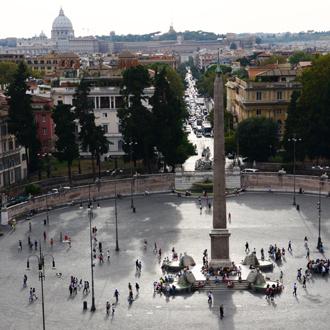
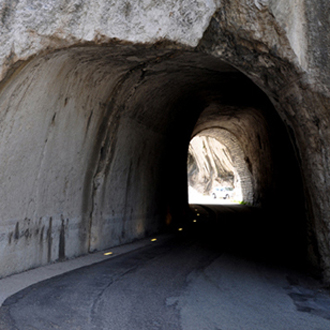
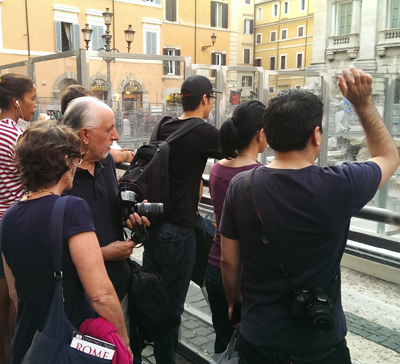
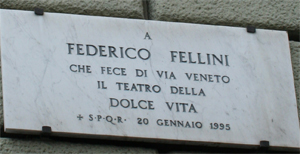 It reads To Federico Fellini who made the
It reads To Federico Fellini who made the 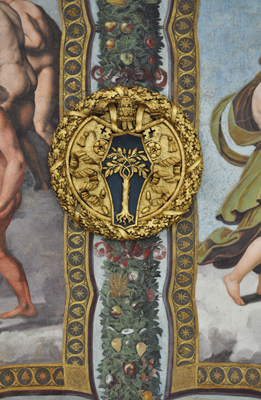
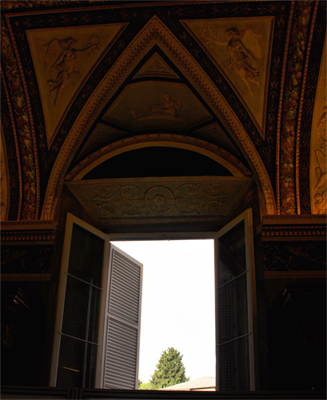
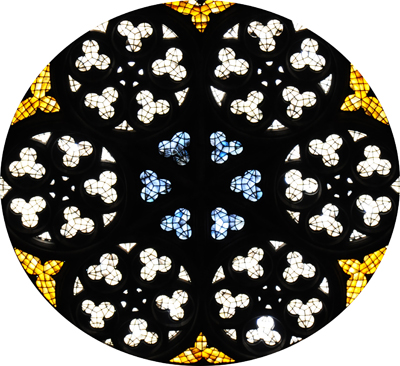
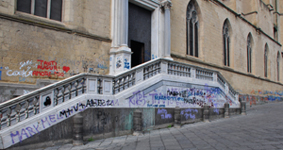 The chapel and the whole complex was a great example of an
The chapel and the whole complex was a great example of an 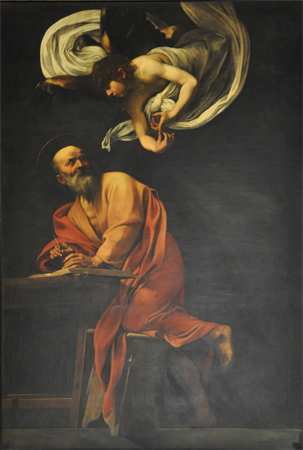
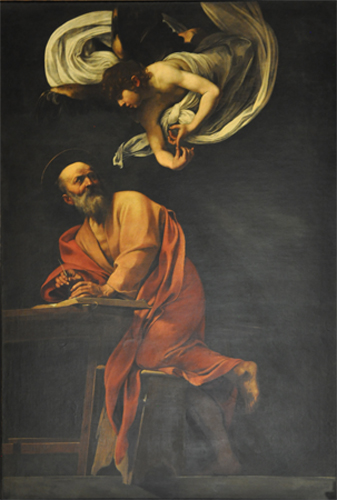 In Ortigia, a neighborhood of Siracusa, we saw our first Caravaggio –
In Ortigia, a neighborhood of Siracusa, we saw our first Caravaggio – 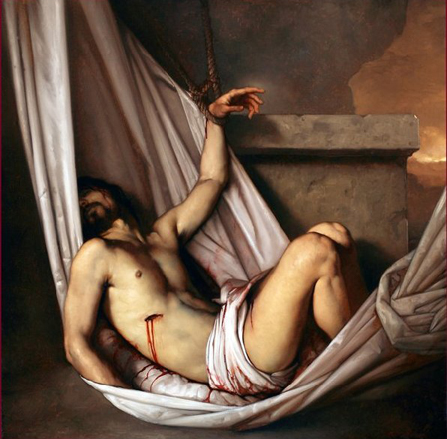
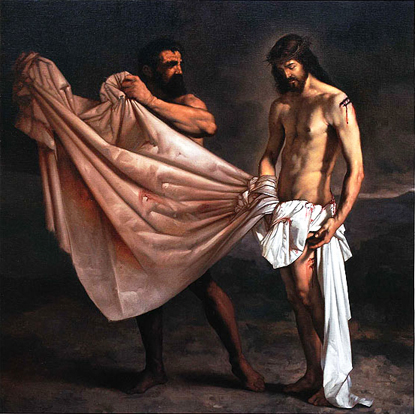
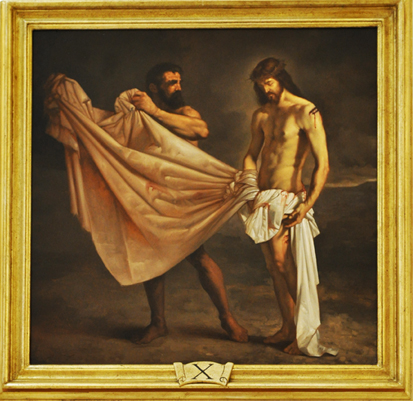 and carrie is stripped of her humanity
and carrie is stripped of her humanity